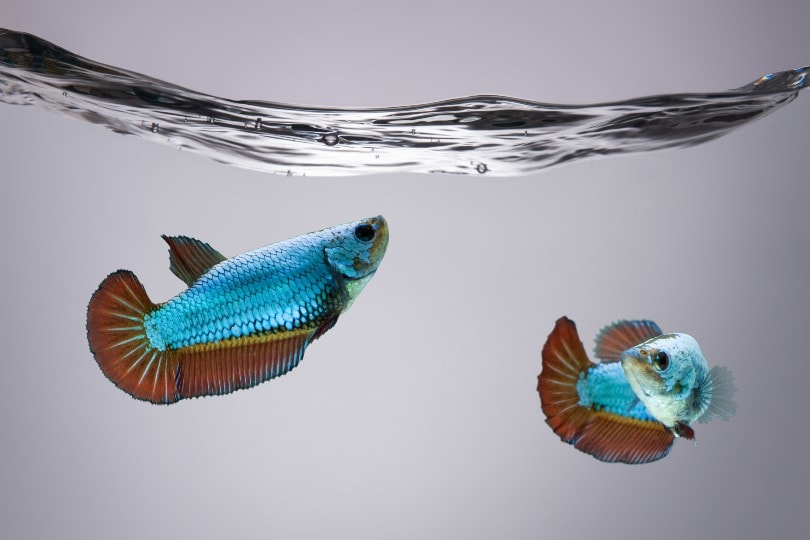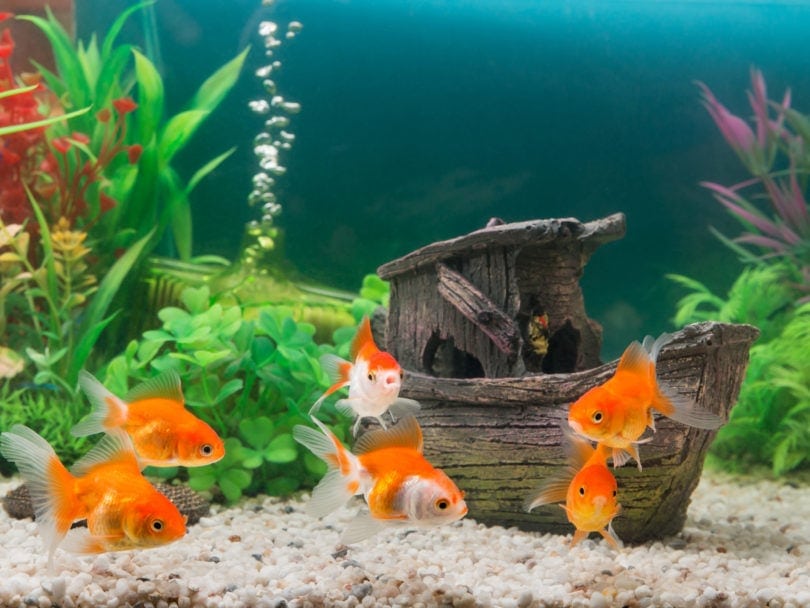
Substrate seems to be one of the most hotly debated subjects in the world of goldfish keeping. Basically, everyone who has ever owned a goldfish has an opinion about substrate, and they’ll probably tell you that opinion if you mention a substrate to them that they feel strongly opposed to. It can definitely get extremely confusing.
Like all other aspects of goldfish keeping, we all want to do everything we can to provide the safest and happiest environment for our goldfish. If they’re happy and healthy, they can live for decades. Since there are so many opinions and so much confusion surrounding which substrate is best for your goldfish, it’s difficult to even know where to start. So, what is the best substrate for your goldfish tank?
What’s the Best Substrate?
There is no universal “best” substrate. The substrate you choose should meet the needs of your specific fish and tank setup. That’s probably not the answer you were hoping for because it still doesn’t give you a straightforward answer. That said, let’s discuss the pros and cons of the most popular substrate options for goldfish tanks, as well as covering which substrates to avoid.
What’s the Purpose of Substrate?
Substrate can serve multiple purposes in a goldfish tank. One of the top reasons people want to use substrate is to provide an anchor and rooting medium for live plants. Substrate can also encourage foraging and help enrich your goldfish’s environment. Some people choose to have a substrate for purely aesthetic purposes. Substrate can be one of the places within the tank that encourages the colonization of beneficial bacteria, which keeps your tank cycled and healthy.
The 3 Main Types of Substrate
1. Bare Bottom: Pros and Cons

Some people choose to go with no substrate at all, instead leaving the tank bare bottom. This can make tank cleaning a breeze, especially since you can easily see where food or waste has collected. Goldfish are notorious for uprooting plants, so some people find keeping a bare bottom tank and placing potted aquatic plants in the tank to be a better option than planting directly into a substrate. This allows for deeper anchoring of the plants and less space for your goldfish to dig around it.
Bare bottom tanks take away one of your goldfish’s most important natural activities: foraging. Goldfish forage throughout the day, picking up plant matter and leftover food as they come across it. With substrate, goldfish can nose through the substrate while foraging, which keeps them much busier than just picking up things they spot on the floor of a bare bottom tank. Aesthetically speaking, many people don’t like the look of a bare bottom tank, especially since it shows messes much more easily than substrate.
2. Sand: Pros and Cons
Sand is a favorite substrate, and for good reason. It’s small enough that it won’t harm your goldfish if they accidentally eat it, and it allows a soft surface to forage through. Sand is available in multiple colors and textures from fine to coarse. Many plants appreciate having sand as a substrate because its soft consistency makes creating large root systems easy. Darker sand is unlikely to show mess, giving your tank a cleaner appearance.
Sand isn’t heavy enough to hold your plants down if your goldfish decide they need to pull them up, so you may have to invest in plant weights or stones to help weigh plants down while they root. Sand doesn’t contain any nutrients to support plant growth, so you’ll likely have to use root tabs and fertilizers to encourage growth. The fine, lightweight texture of sand can make vacuuming difficult for some people, and it is possible for sand to get pulled into a gravel vac or a filter.
3. Gravel: Pros and Cons

Gravel is easily the most popular substrate on the market. It’s available in tons of colors and can bring a lot of life and texture to your tank. While it is not as soft as sand, many goldfish don’t have any difficulty foraging through the upper level of the gravel. Some plants appreciate the coarse texture of gravel and will grow best with the extra open space that gravel provides.
If you're new to the world of goldfish keeping or are experienced but love to learn more, we highly recommend you check out the best-selling book, The Truth About Goldfish, on Amazon. From diagnosing illnesses and providing correct treatments to proper nutrition, tank maintenance and water quality advice, this book will help you to ensure your goldfish are happy and to be the best goldfish keeper you can be.
Goldfish are prone to picking up gravel while foraging and eating, and many people have had to pull gravel from the mouth of a choking or distressed goldfish. Most gravel available at pet stores is the perfect size for larger goldfish to fit into their mouths and not be able to get it back out. Like sand, gravel doesn’t provide any nutrients to plants, so you will have to add these to the environment. One of the biggest downsides of gravel is how much waste can slip through the cracks, allowing waste to collect on the bottom of the tank. It can be difficult to thoroughly clean a gravel tank, which can allow for alterations in your water parameters due to rotting materials in the gravel.
Substrates to Avoid
Crushed coral and aragonite substrates should be avoided in goldfish tanks. Some people use these products in small quantities to help maintain their pH level, but these products are not a good choice for a full tank substrate. They are intended for saltwater setups and can raise the pH of your tank to alkaline levels. It’s especially important to avoid these substrates when they are sold “wet”, as they may contain saltwater.
You may have seen substrates made specifically for plants or shrimp tanks and wondered if they’d work well for your goldfish tank. Unfortunately, these substrates usually alter water parameters, including lowering the pH to acidic levels that your goldfish will not be comfortable with. If you are interested in keeping a planted tank, root tabs and liquid fertilizers are great options for feeding your plants without using a planted tank substrate.
Final Thoughts
Even though there’s not really a clear answer to what the best substrate is, there are multiple great options available to you. Your personal preferences get to be your main determining factor in choosing a substrate, which means you can personalize your tank and make it meet your preferred aesthetic, without having to risk the health of your goldfish. There are tons of substrates on the market, so you can choose from multiple textures, colors, and sizes. You can also choose to keep a bare bottom tank. It’s all completely up to you!
Featured Image Credit by: Hineck, Pixabay









